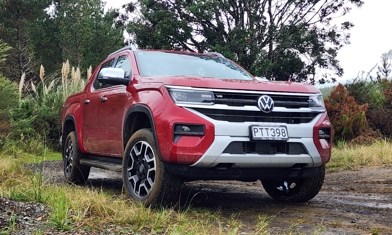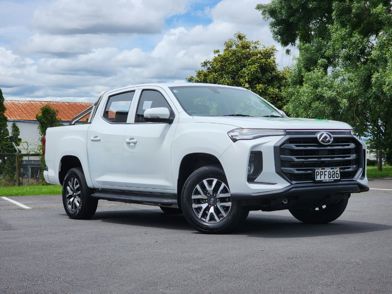Value for money has always been the primary appeal of the new wave of Chinese utes, and we can’t see that changing any time soon, given how solidly established names like Ford Ranger and Toyota Hilux are entrenched in the hearts and minds of Kiwi buyers.
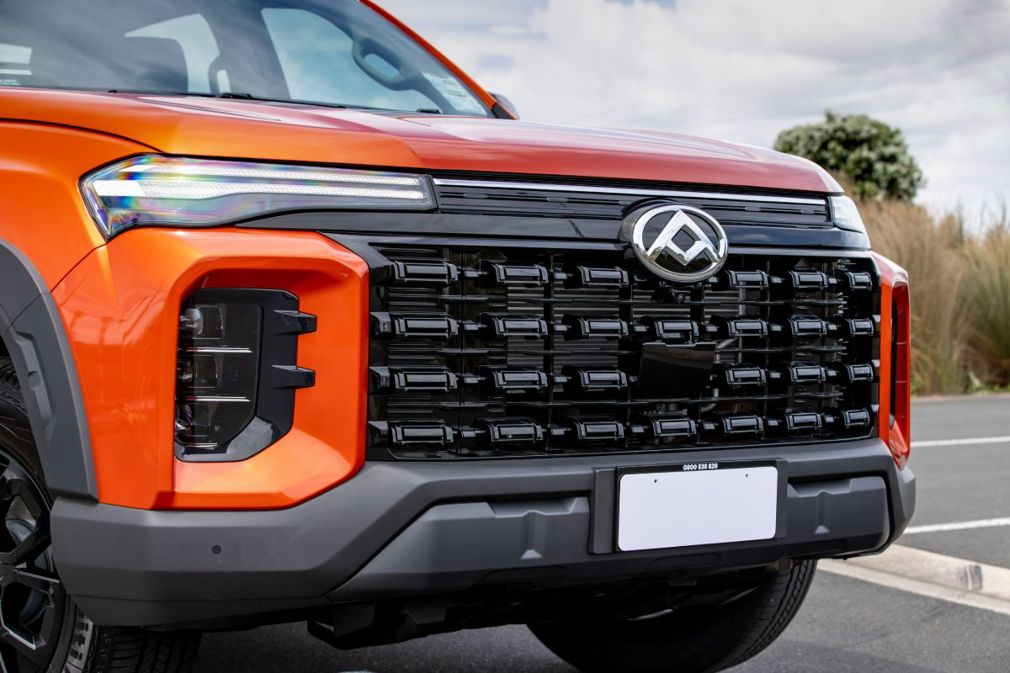
So in some respects, you still get what you pay for; that’s not meant to be a putdown, by the way, just a fiscal observation. Even the best Chinese one-tonners don’t quite have the overall quality and ability of the mainstream brigade, but nor do they have to. Because they’re commonly tens of thousands of dollars cheaper and often come with killer warranty packages.
And the stock of these new models is indeed rising, because there are fewer and fewer compromises involved as each new model comes along. They are improving rapidly.
Case in point is the updated LDV T60 Max Plus. LDV New Zealand is pitching this as a new flagship model for the existing range, but make no mistake: it’s actually a facelift, with different styling, extra safety technology and a whole new cabin design. Even though the previous model continues as a (more) budget offering.
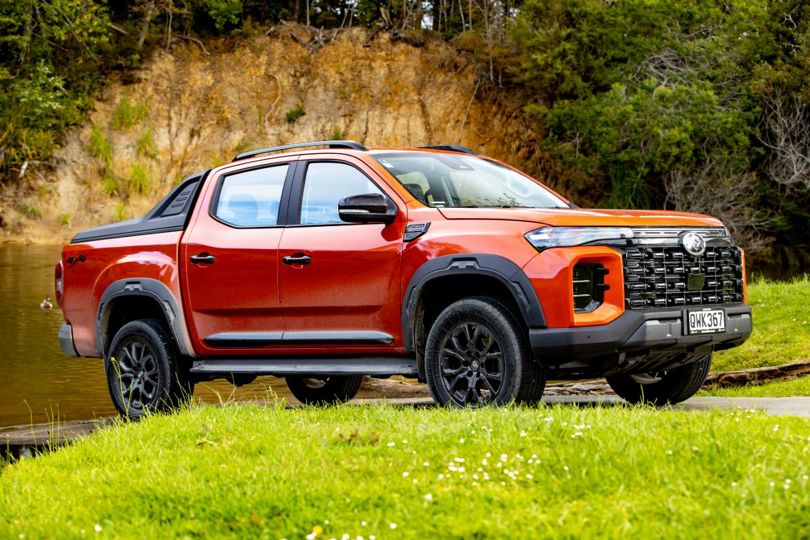
LDV is upfront about any kind of T60 primarily being a workhorse. But it’s clear the Max Plus has lifestyle aspirations, with its bright colours, blacked-out exterior detailing and that chunky sailplane around the tray.
In some respects, you still get what you pay for; that’s not meant to be a putdown, by the way, just a fiscal observation.
If you want to think boldly, you could argue it’s the LDV equivalent of a Ford Ranger Wildtrak or Toyota Hilux SR5 Cruiser. Except the Ford starts at $76,990 and the Toyota $65,990; the LDV is $55,990 and yes, it’s fully loaded. With a 7-year warranty.
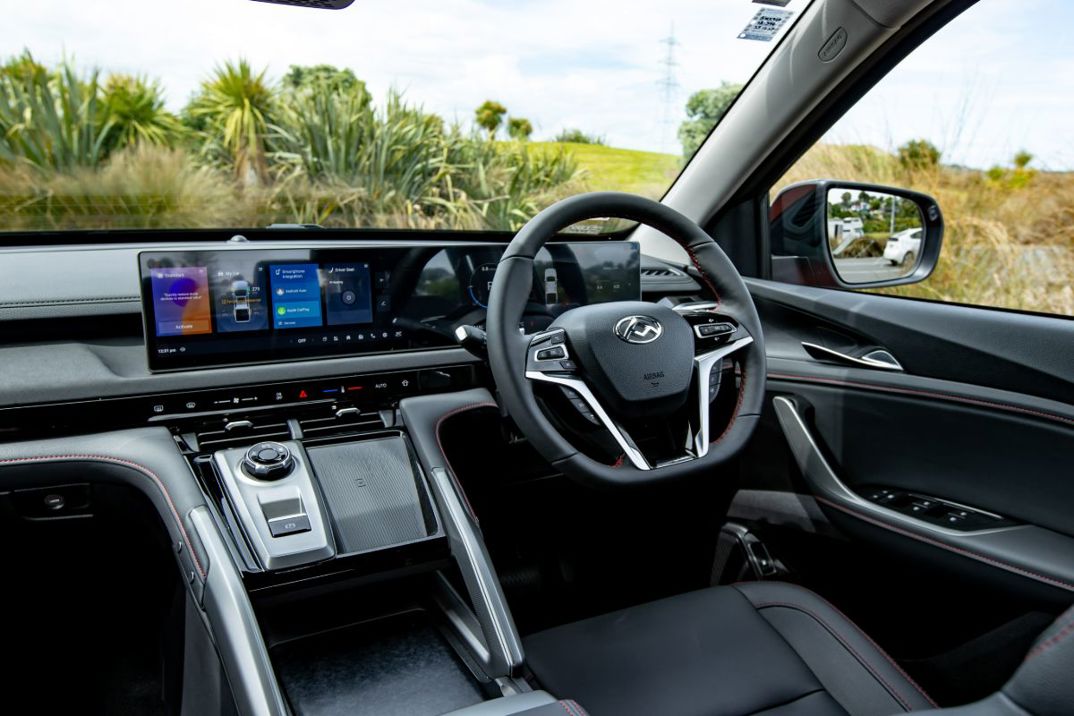
On paper, it stacks up pretty well. The 2.0-litre turbo-diesel engine makes 160kW and a healthy 500Nm of torque, so it’s right up there with Ranger and Hilux. The 8-speed automatic is right in the middle (Ford 10, Toyota 6).
Jump into the Max Plus cabin and we challenge you not to be impressed. The dashboard looks positively swish and features soft-touch materials everywhere.
It looks okay in terms of ute-type stuff: the payload of 830kg and tow rating of 3 tonnes are both a bit down on the big names (they’re closer to the full tonne for the tray and 3.5t), but useful all the same. The tray is fully lined and the tailgate has an assist that prevents it from clonking down too aggressively.

Jump in the Max Plus cabin and we challenge you not to be impressed. The dashboard looks positively swish and features soft-touch materials everywhere.
Updated electronic architecture means the Max Plus gets electric power steering and a forward-facing camera, which enables all the active safety stuff like lane assist, autonomous braking and stop/go adaptive cruise.
There’s a “continuous display” uniting two 12.3in screens and an excellent wireless phone projection system that performed faultlessly during our week with the vehicle. The high-set wireless charging pad ignores the current fashion of hiding your phone away for safety, but it’s nicely positioned and while it looks a bit precarious, the tactile rubber lining holds your precious mobile firm.
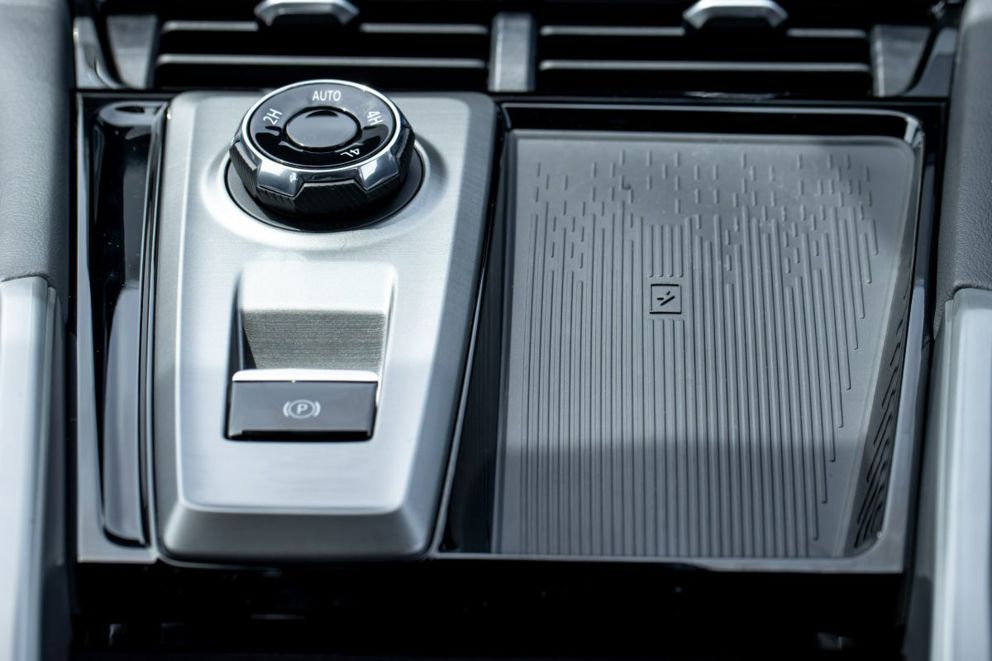
Okay, we’ll go ahead and say it: in broad terms the Max Plus cabin environment stands comparison with any of the big names. It’s more car- than truck-like, which will be a matter of taste for ute buyers, but the architecture and fit-finish is nicely executed.
The biggest letdown is the front seats, which seem to be set too high and are devoid of backrest shape. You definitely sit on, not in, the Max Plus.
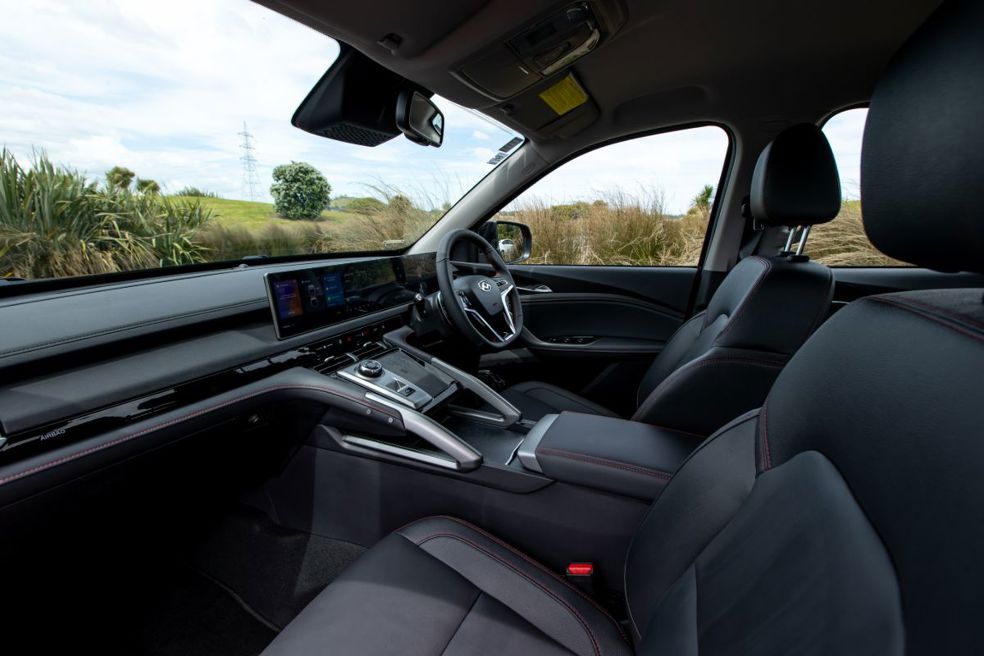
The torquey turbo-diesel doesn’t win any prizes for refinement, but it certainly gets on with business - at least once you overcome a bit of lag from a standing start. Utes are not made for cornering speed, but the Max Plus is actually pretty stable in the turns, perhaps partly thanks to multi-link rear suspension (which will also be part of the reason why it’s not rated to tow 3.5t).
What does undermine the dynamic package is the ride, which is worryingly truck-like at low speed. It shudders and hops over every little ripple in the road. It takes some getting used to; but it also stands to reason it will settle with a load on the tray.
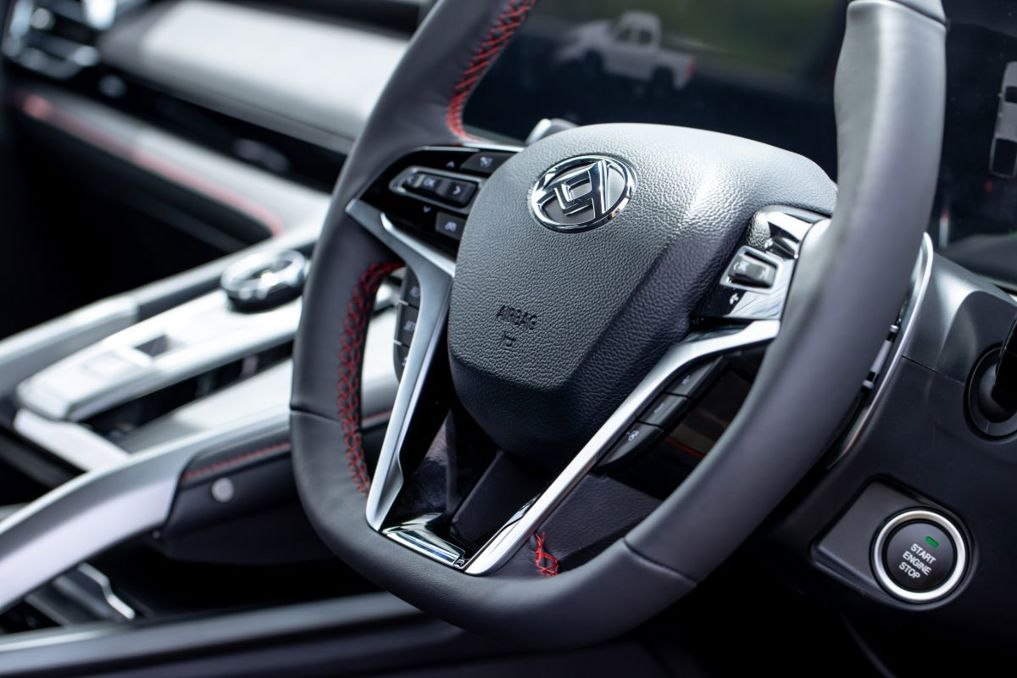
The updated electronic architecture means the Max Plus gets electric power steering and a forward-facing camera, which enables all the active safety stuff like lane assist, autonomous braking and stop/go adaptive cruise.
The lane-keep technology is a bit fussy, but fundamentally it works pretty well. The adaptive cruise is good on the motorway, but it has its foibles.
It doesn’t like steady inclines for example, where it surges constantly to the point where it starts to irritate. And this is partly a diesel-lag thing, but it takes an age to start the vehicle in traffic from a standstill; you basically have to override it with the throttle to avoid horn-blasts from traffic behind.
We had a moan about the tiny cruise-speed display on the LDV Deliver 7 dashboard and the Max Plus has the same thing, but at least when you adjust it in the ute you get a much larger pop-up display that tracks the changes you’re making before disappearing again.
Other quirks. Some of the, shall we say “manoeuvring” technology is infuriating. If the indicators are going at below 30km/h, the audio is muted. So you can be listening to a song or podcast, and if you’re sitting at the traffic lights for a while waiting to make a turn, you know you’re missing out because the audio is still playing… but the T60 doesn’t want you to hear it.
Same for the 360-degree camera system. An excellent feature with a comprehensive around-view, but as soon as it activates front or rear (like when you pull up behind another vehicle), there goes the audio again.
There’s much to recommend the T60 Max Plus. It looks the part, the cabin is swish and it’s well-equipped. But there are elements of the dynamic and electronic architecture that are unresolved and, let’s face it, a bit annoying. Fix those (they are very fixable, by the way) and we would be talking even less about the opportunity cost of saving $10-$20k on a specced-up ute.
How much is the LDV T60 Max Plus?
The Max Plus is $55,990 and the flagship of the range. It's also the only model that's essentially a facelift/update, which explains the near-$16k gap to the next-model-down, the (previous shape) T60 Lux.
What are the key statistics for the LDV T60 Max Plus?
The 2.0-litre biturbo diesel is shared with other T60s and makes 160kW/500Nm, driving through an 8-speed gearbox. It has low-range for 4x4 driving and a locking rear differential.
Is the LDV T60 Max Plus efficient?
The official 10.6l/100km figure is class-average.
Is the LDV T60 Max Plus good to drive?
It's a mixed bag. The engine is very torquey, the 8-speed gearbox smooth and the on-road handling stable, but it's also quite noisy and bumpy over urban surfaces.
Is the LDV T60 Max Plus practical?
It's a pretty practical ute, although the 830kg payload and 3-tonne tow ratings are slightly down on mainstream utes (1-tonne and 3.5t are typical). That's still plenty, though.
What do we like about the LDV T60 Max Plus?
It really looks the parts, the car-like cabin is really impressive and nicely finished, and it's up to achieving the ute basics with decent payload and tow ability. It's loaded with active safety stuff. It's a lot of ute for $56k, no matter which way you look at it and you get a 7-year warranty.
What don’t we like about the LDV T60 Max Plus?
The ride is dire around town and the hard, high-set front seats don't help. There are a few electronic quirks to contend with: the weird adaptive cruise calibration on inclines and the way the indicators/camera view mute the audio under 30km/h is infuriating.
What kind of person would the LDV T60 Max Plus suit?
Somebody who wants to get 70% of the way to a Ford Ranger Wildtrak for $20k less outlay.















